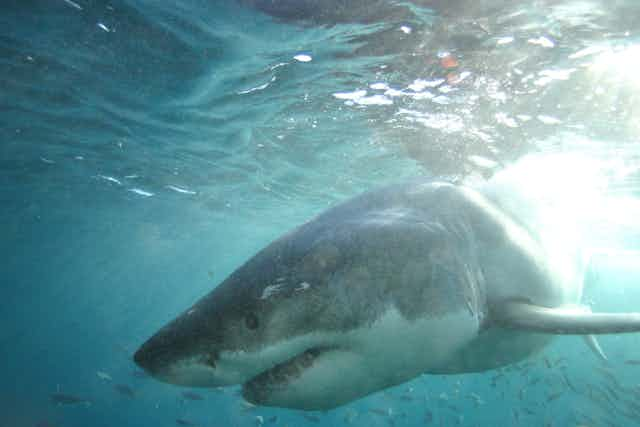After a spate of fatal shark attacks over the past two years, Western Australia has released a radical new shark plan that will see large sharks removed and destroyed from designated “safe zones”.
The plan includes drum lines (baited hooks attached to drums) monitored daily, and soliciting commercial fishers to hunt sharks larger than 3 metres.
Nationally threatened and legally protected Great White Sharks are expected to be one of the targeted species.
But do these sort of measures actually reduce shark attacks, and how can we assess the results?
How do we measure if shark programs work?
There are passionate, well-intentioned people on both sides of the shark culling debate. We are unlikely to ever reach consensus on the philosophical question of whether it is ethical to kill large predators in order to make the natural environment a safer playground for humans.
What everyone can and should do is demand a rigorous, fact-based approach to this controversial issue.
Unanswered questions remain in Western Australia’s shark plan: how will the state define success of these programs and how will this be measured? What are the impacts of culling likely to be on various Australian shark populations and their natural prey, and how will these be assessed?
True effectiveness cannot be assessed by simply counting the number of sharks captured and killed. Demonstrable effectiveness means a measurable decrease in shark bite incidents in response to culling activities.
Hawaii shark control programs of the 1960s and 1970s, for example, were not demonstrably effective. These programs were expensive, culled 4,668 sharks and yet failed to produce measurable decreases in shark bite incidents.
The challenges of reducing shark bites at specific locations were clearly illustrated by the events at Barbers Point on the Hawaiian island of Oahu. The 1967-69 shark control program removed 33 tiger sharks at that one location alone, yet soon after the program finished a shark bite occurred at Barbers Point.
Is it a cull?
Western Australian fisheries minister Troy Buswell has tried to soften the current plan by indulging in semantics.
He said:
This does not represent a culling of sharks. It is not a fear-driven hunt, it is a targeted, localised shark mitigation strategy.
Culling can be variously defined as “the reduction of the size of an animal population” or “to reduce the size of (a herd or flock) by killing a proportion of its members”. Clearly culling is an entirely appropriate term to use for the proposed activities.
What type of cull will it be?
WA would like to remove sharks in order to reduce the rate of shark bites on humans, ideally to zero.
For this to work the sharks either have to be a) resident in the areas of concern (the “safe zones”) or b) continually removed as new sharks arrive in the area.
The proposed plan appears to be at the continuous removal end of the spectrum. Shark fishing lines will be deployed 24-hours a day for at least several months. This approach has the potential to remove large numbers of highly-mobile species such as white sharks and tiger sharks which will encounter these lines during their natural migrations along the Australian coastline.
The current proposal provides no estimates of how many sharks will be removed, making it impossible to gauge the likely impact on the shark species in question, or possible broader, ecosystem-level effects.
Culling nothing new for Australia
Removing large numbers of sharks in the hope of keeping ocean users safe is nothing new in Australia. Other states have long-running shark control programs using both baited hooks and shark nets to target sharks.
For example, the Queensland and New South Wales shark control programs have been operating for decades and during that period have captured thousands of sharks. Current WA proposals are broadly similar to existing and historical Australian shark control programs.
But they are controversial both because they are a new strategy for this region and also because they will target Great White Sharks, currently protected as endangered species due to their naturally rare occurrence and low rate of reproduction which make them vulnerable to population collapse.
Proponents and opponents of the current WA shark culling proposals may find some common ground in demanding appropriate transparency in these tax payer-funded activities.
Ideally there should be federal fisheries observers on vessels targeting sharks, so the exact number, size and species of sharks captured, as well as their fate, is independently verified. The results of the culling should also be independently analysed to ensure stated objectives are being met.
After all, whether you are for or against shark culling, most would agree that there is no point in spending millions on a program that kills sharks without stopping shark attacks.

